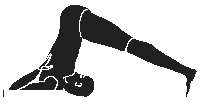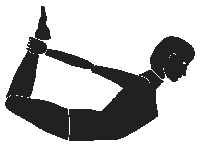Introduction

Though, Diabetes mellitus is not completely curable but, it is controllable to a great extent. So, you need to have thorough diabetes information to manage this it successfully. The control of diabetes mostly depends on the patient and it is his/her responsibility to take care of their diet, exercise and medication. Advances in diabetes research have led to better ways of controlling diabetes and treating its complications.
Yoga and Diabetics
Regular practice of yoga does reduce blood sugar levels, the blood pressure, weight, the rate of progression to the complications, and the severity of the complications as well. Yoga activates the thyroid glands, massages the pancreas, stimulates nerve impulses to the pancreas and even affects the whole metabolism and provides healing energies of circulation. Hence, beneficial in the treatment of diabetes. Although, Yoga cannot cure diabetes, but it can complement the lifestyle changes which are necessary to keep the symptoms in diabetics under control. It also helps in keeping the person in good health and well-being. Yoga can create a life that is full, happy, healthy and balanced. If a person wants to lose weight, then in them yoga helps to build up concentration and will power, due to which it is easier for them to stay on weight-loss program. Yoga excersises gently tone and also improves circulation particularly to the extremities. Yoga exercises in combination with relaxation training, reduces the blood pressure and keeps diabetes in control.YOGA POSES FOR DIABETICS
Easy pose
This is one of the classic Meditative Poses and is usually performed after doing the Corpse Pose. The Easy Pose helps in straightening the spine, slowing down metabolism, promoting inner tranquility, and keeping your mind still.Shoulder Stretches
Shoulder Stretches are great in relieving stress and tension on your shoulders, as well as your entire upper back. Practice them daily for several weeks and notice the changes. Learn some basic stretches for the shoulders in this section.Sun Salutation
The Sun Salutation or Surya Namaskar is a Yoga Pose which limbers up the whole body in preparation for the Yoga Asanas. It is a graceful sequence of twelve Yoga positions performed as one continuous exercise. Learn how to practice Sun Salutation in this section.Half Spinal Twist
If done properly, the Half Spinal Twist lengthens and strengthens the spine. It is also beneficial for your liver, kidneys, as well as adrenal glands. Practice this Yoga Pose under the supervision of a Yoga instructor. In this section, learn how to perform the Half Spinal Twist.Stand Spread Leg Forward Fold
Practicing the Standing Spread Leg Forward Fold can strengthen and stretch your inner and back legs and your spine. People with lower back problems should avoid doing the full forward bend. For beginners, you may use props like a folding chair to support your forearms.Tree Pose
The Tree Pose helps strengthen your thighs, calves, ankles and back. It can also increase the flexibility of your hips and groin. Your balance and concentration can also be improved with constant practice. This Yoga Pose is recommended for people who have sciatica and flat feet.Double Leg Raises
A Double Leg Raise is similar to a Single Leg Raise, only this time, you will raise both legs. In doing this Yoga Pose, make sure that the full length of your back is resting on the floor and your shoulders and neck are relaxed. This section covers the steps and guidelines on how to do this pose properly.Fish Pose
Doing the Fish Pose relieves stiffness of the neck and shoulder muscles and improves flexibility of your spine. It is the counter-pose of the Shoulder stand. Hold the Fish Pose for at least half the amount of time you spent in the Shoulder stands in order to balance the stretch.Corpse Pose
The Corpse Yoga Pose is considered as a classic relaxation Yoga Pose and is practiced before or in between Asanas as well as a Final Relaxation. While it looks deceptively simple, it is actually difficult to perform. Learn more on how to do it with the help of this article.Kapalabhati
Kapalabhati is a Breathing Technique used specifically for cleansing. If you have a lot of mucus in the air passages or feel tension and blockages in the chest it is often helpful to breathe quickly. This article will introduce you to these breathing techniques and show you its benefits.Anuloma Viloma
Anuloma Viloma is also called the Alternate Nostril Breathing Technique. In this Breathing Technique, you inhale through one nostril, retain the breath, and exhale through the other nostril. Learn how to do this technique for beginners by following the steps found in this article.Relaxation Pose
There are three parts to proper relaxation - physical, mental and spiritual relaxation. Relaxation Yoga Pose relaxes your body and mind, and makes you feel refreshed after doing the Asanas and the pranayama. This is why it is an essential part of Yoga practice.YOGA ASANAS FOR DIABETICS
UTTHITAPADMASANA
Utthita Padmasana tones up the body by strengthening hands, legs and spine. It also helps in treating genital diseases and improves vitality.
Steps
- Place both palms on the floor beside the thighs. While inhaling, lift up your body and balance its weight on the palms. Look straight.
- Try to keep your spine and elbows straight. Hold this for some time.
- Then, while exhaling, slowly return to the normal position. Repeat by changing the position of the legs.
HALASANA

Steps
- Lie flat on your back with legs and feet together, arms at the sides, closed and placed beside the thighs.
- Keeping your legs straight, inhale slowly, and raise your legs to 30, 60 and 90, pausing at each stage. While exhaling push your legs further over and above the head and then beyond, so that they touch the floor (without bending the knees).
- Stretch your legs as far as possible so that your chin presses tightly against the chest. Then raise your hands and try to hold the toes. Retain the pose from 10 seconds to three minutes. Breathe normally.
- While exhaling, return to the standing position. Slowly go through the process in the reverse order.
DHANURASANA

Steps
- Lie down with face and the forehead touching the ground, arms extended along side the body and legs straight.
- Bend your legs at the knees towards the hips, bringing them forward so that they can be held firmly by the hands at the ankles on the respective sides.
- While inhaling, stretch your legs backwards and raise your thighs, chest and head simultaneously. Hands should be kept straight. The weight of the body should be on the navel. Knees should be kept close, if possible, with eyes looking upwards. This posture should be retained for at least a few seconds, holding the breath.
ARDHA MATSYENDRASANA

Steps
- Sit on the ground, stretching both the legs forward. Bend your right leg and place the heel under the left hip.
- Now bend your left leg, cross it over and place your foot by the side of the right knee. Try to hold the left ankle by passing the right arm over the left side of the left knee. At the same time, exhale and take the left arm behind the back and press the right side under the ribs.
- This has to be done by twisting the trunk to the back as much as possible. Maintain this posture for a few seconds and increase the duration to two minutes gradually.
- Repeat the same process on the other side for the same duration.
MANDUKASANA

Steps
- Take the posture of Vajrasana, fold your palms into fists and place them next to your navel.
- While exhaling, gradually bend forward without raising your hips and rest the abdomen and fists over the thighs.
- Retain the posture for some time and while inhaling, return to normal position and relax.
SALABHA ASANA

Steps
- Inhale slowly but deeply through both the nostrils and retaining the breath make your head straight and put the chin on the floor (use a folded towel underneath the chin). Tighten both the legs and lift them up as high as you easily can. Do not bend the knees.
- Stay in the same posture for 5 to 6 seconds.
- Exhale and simultaneously lower the legs slowly to the floor. Do not drop the legs. By the time the legs touch the floor you should finish exhaling.
Diseases Related to Virgo |
||


